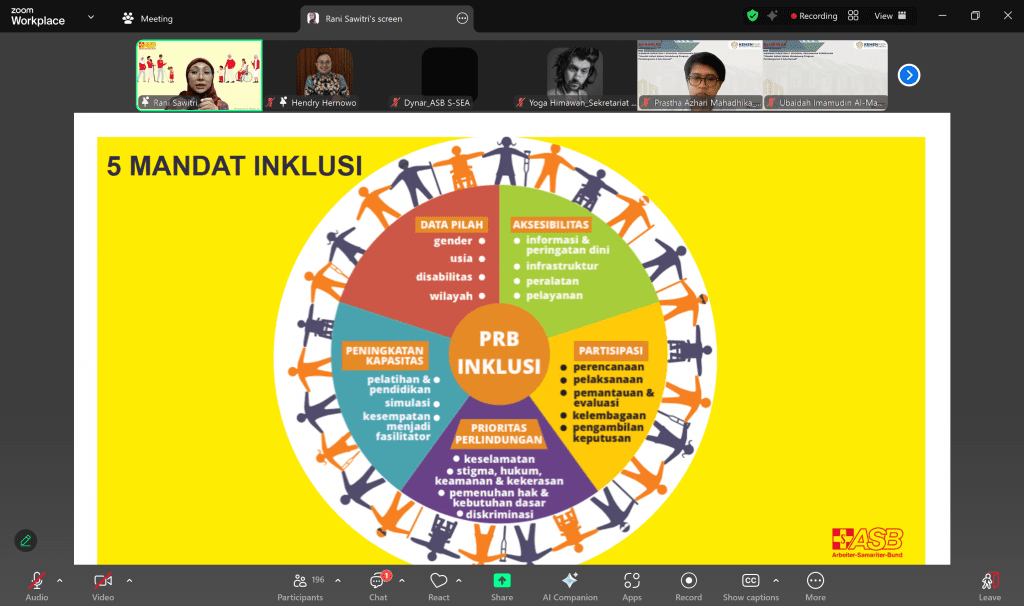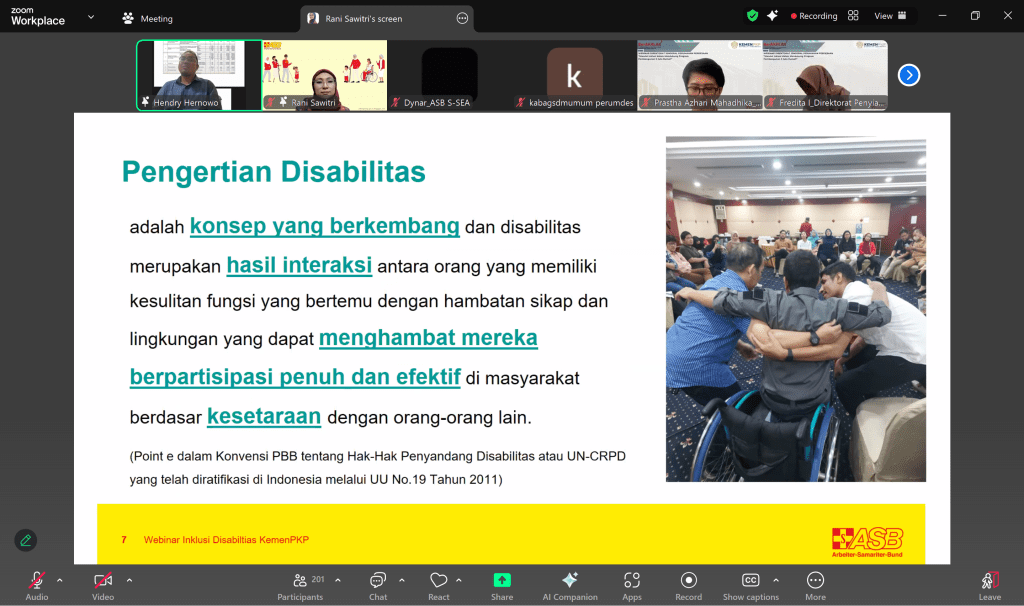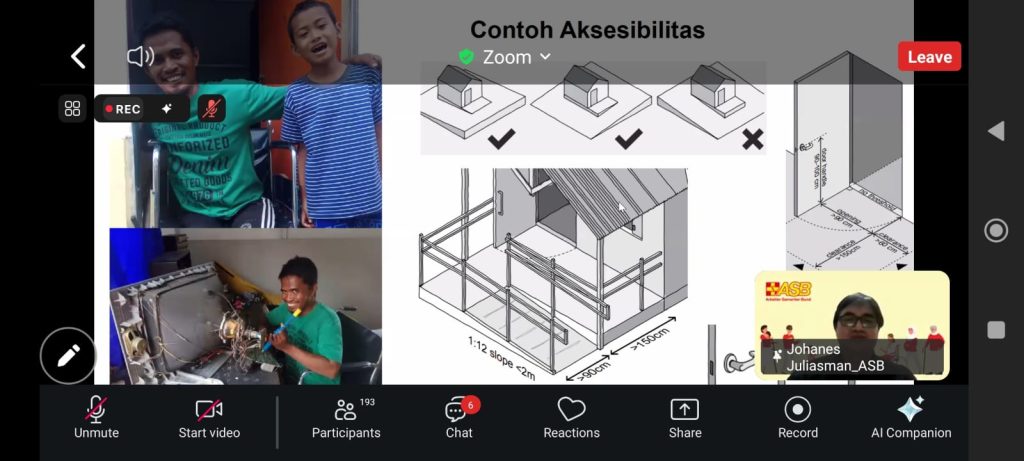“This topic is so close to our lives, yet rarely discussed—thank you for this eye-opening webinar,” shared one participant from the Ministry of Housing and Settlement Areas (Kementerian PKP) of the Republic of Indonesia.
As the Government of Indonesia launches its 3 Million Housing Programme, aimed at addressing the country’s significant housing backlog (Kementerian PKP, 2025), the call to ensure inclusive and equitable access to adequate housing has never been more urgent. Recognising this, the Ministry of PKP recently held a webinar attended by over 200 participants from various departments to explore one key question: How can we ensure that housing development is inclusive of persons with disabilities and other at-risk groups?

The discussion was not simply about infrastructure or numbers—it was about understanding inclusion as a process, not a product.
We were honoured to collaborate in this important dialogue through contributions from our team at Arbeiter-Samariter-Bund South and Southeast Asia (ASB S-SEA) and local partner.
Rani Sawitri, Capacity Transfer Coordinator at ASB S-SEA, opened the session by introducing the 5 Inclusion Mandates—disaggregated data, accessibility, meaningful participation, capacity building, and protection prioritisation—and explaining how these principles provide a foundation for inclusive programming.
“Inclusion of persons with disabilities is not an option—it is a must,” Rani affirmed.

The session was further enriched by insights from Hendry Hernowo, Head of the Disability Inclusion Forum in Magelang Regency (FIDAKAMA), who challenged misconceptions about disability and shared community-level experiences of meaningful participation.
“Disability inclusion means enabling persons with disabilities to participate meaningfully,” Hendry stated, reminding us that the barriers are often not the impairments themselves, but social attitudes and environmental obstacles.

Johannes Juliasman, Project Manager of ASB’s PASTI Phase II programme, explored how inclusive shelter assessments must take into account the entire process—from planning and coordination to implementation—ensuring that assistance is based on the capacity and needs of all, particularly those most at risk: persons with disabilities, older people, women, and children.
“Housing is not just a product—it is a process. We must ensure that the process itself is inclusive,” Johannes highlighted.
Throughout the session, speakers emphasised that accessibility extends beyond physical infrastructure—it also includes accessible information, inclusive services, and shifts in mindset and behaviour.
Moderator Muhammad Hadi Pranowo of the Directorate General of Rural Housing at Kementerian PKP reflected on the importance of changing perceptions, sharing how Hendry’s presentation helped him better understand that disability is not solely about functional difficulty—but about the interaction between individuals and the attitudinal and environmental barriers that hinder full and effective participation in society on an equal basis with others.
This dialogue reflects a shared commitment to embedding inclusion across government initiatives—not as a separate add-on, but as a central design principle. The 5 Inclusion Mandates serve as a practical framework to support this journey.
🔗 For more on the 5 Inclusion Must, visit our resource: 5 Inclusion Must.

